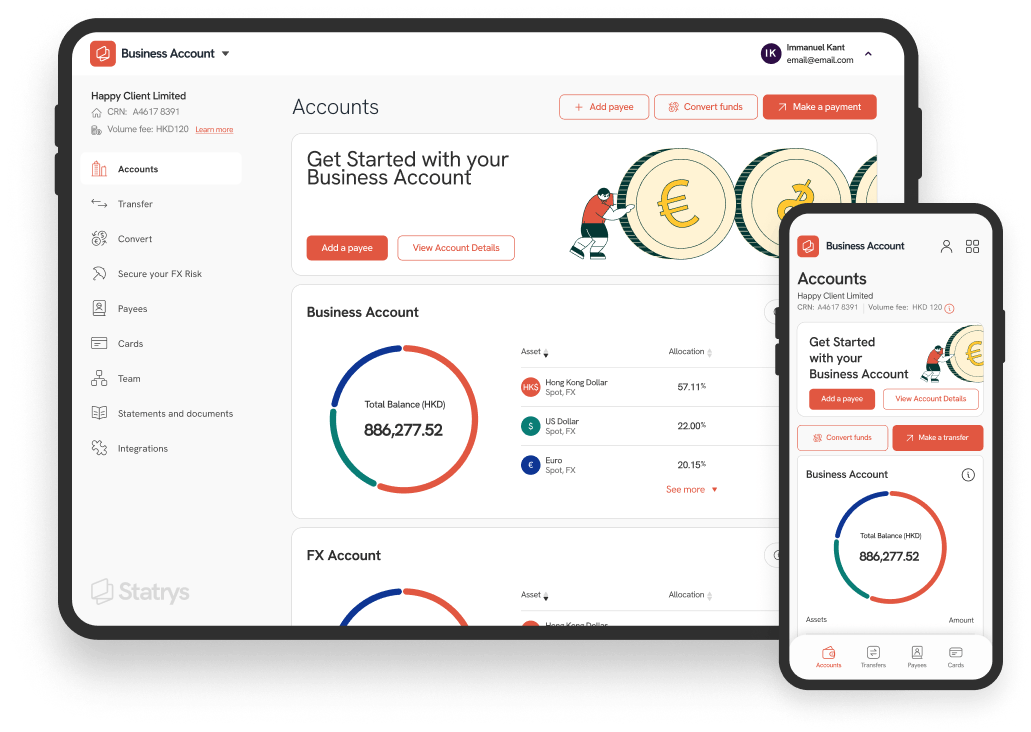Key Takeaways
Most global currencies use a small set of easily recognised symbols, like $, €, or ¥. Knowing which symbol belongs to which currency and when to use currency codes helps avoid confusion when pricing, invoicing, or handling international payments.
Currency symbols show up everywhere, on price tags, invoices, websites, and payment platforms. But with similar symbols used across multiple currencies, it’s easy to mix them up, especially in cross-border business.
In this guide, we’ll explain what currency symbols are, how they differ from currency codes, and share the most commonly used symbols from around the world.
What Is a Currency Symbol?
A currency symbol is a short visual sign that represents a currency, such as $ for the US dollar, € for the euro, or ₹ for the Indian rupee. These symbols often appear on price tags, invoices, receipts, and online checkouts to indicate the currency used.
For example:
- $100 = One hundred US dollars
- 100 € = One hundred euros
- ₹500 = Five hundred Indian rupees
Some symbols are shared by multiple countries. For example, the dollar sign ($) is used not only for the US dollar, but also for currencies like the Hong Kong dollar (HK$), Singapore dollar (S$), and Australian dollar (A$). Others, like the Indian rupee symbol (₹), reflect local identity, incorporating elements from India’s Devanagari script.
Currency Code vs Currency Symbol
Currency symbols and currency codes both represent money, but they serve different purposes depending on the context.
Here’s a quick comparison to help you understand when to use each:
| Use Case | Currency Symbol | Currency Code | Example |
|---|---|---|---|
| Informal display (price tags, websites) | Commonly used | Rarely used | $100 |
| Official documents, banking | Rarely used | Commonly used | USD 100 |
| FX or payment platforms | Not used | Commonly used | USD/EUR |
Currency codes consist of three capital letters (such as USD, EUR, HKD) defined by the ISO 4217 standard. They’re used in banking, payment platforms, and accounting systems to ensure consistency and avoid confusion.
Currency symbols (like $, €, or ¥) are more common in everyday pricing, product displays, and marketing.
For invoices, payments, and cross-border transactions, using currency codes is usually the safest option, especially when the same symbol is shared across different currencies.
Where to Place the Currency Symbol
Placement of currency symbols can vary by country. Some regions put the symbol before the amount, while others place it after.
Prefix (before the number) – Common in English-speaking countries:
- $100 → United States
- £50 → United Kingdom
- ₹500 → India
Suffix (after the number) – Common in many European countries:
- 100 € → France
- 50 kr → Sweden
- 100 zł → Poland
When displaying prices for international customers, it’s generally best to follow local formatting conventions. If you're unsure, using the currency code (such as USD) can help ensure clarity in formal documents.
$100, Not 100$
The 17 Most Common Currency Symbols
Below is a list of the most commonly used currency symbols and their official currency codes. Since some symbols, like the dollar sign ($) and yen sign (¥), are shared across different currencies, using currency codes can help avoid confusion in international payments.
| Currency | Symbol | Currency Code |
|---|---|---|
| US Dollar | $ | USD |
| Euro | € | EUR |
| British Pound | £ | GBP |
| Japanese Yen | ¥ | JPY |
| Chinese Yuan | ¥ | CNY |
| Indian Rupee | ₹ | INR |
| Swiss Franc | ₣ | CHF |
| South Korean Won | ₩ | KRW |
| Russian Ruble | ₽ | RUB |
| Vietnamese Dong | ₫ | VND |
| Israeli Shekel | ₪ | ILS |
| Canadian Dollar | C$ | CAD |
| Australian Dollar | A$ | AUD |
| Singapore Dollar | S$ | SGD |
| Thai Baht | ฿ | THB |
| Philippine Peso | ₱ | PHP |
| Brazilian Real | R$ | BRL |

¥ Can Mean Yen or Yuan. The ¥ symbol is used for both Japanese Yen (JPY) and Chinese Yuan (CNY). To avoid confusion, include the currency code or a country prefix (e.g. CN¥) when needed.
Cryptocurrency Symbols
Cryptocurrencies use their own set of symbols, which work a bit differently from traditional currency symbols. These are usually created by the crypto community rather than being set by a formal standard like ISO 4217.
Still, a few have become widely recognised across wallets, exchanges, and checkout platforms. Here's a quick visual reference:

In most cases, cryptocurrencies are displayed using their three-letter codes, especially on platforms like Shopify, Stripe, or crypto wallets (e.g., BTC 0.02, ETH 1.5). Because formatting isn’t always consistent across platforms, using the currency code is often the safest choice for business and payment settings.
As the crypto market evolves, new symbols may continue to appear as additional digital currencies gain wider use.
Final Note
Getting currency symbols right can make your communication clearer and more professional, whether you're formatting prices, sending invoices, or managing payments across borders.
If you're ever unsure about which symbol to use, the currency code is always a safe and consistent choice, especially when the same symbol applies to more than one currency.
FAQs
What currency symbol is €?
The € symbol represents the euro, which is used by many countries in the European Union. Its currency code is EUR.








